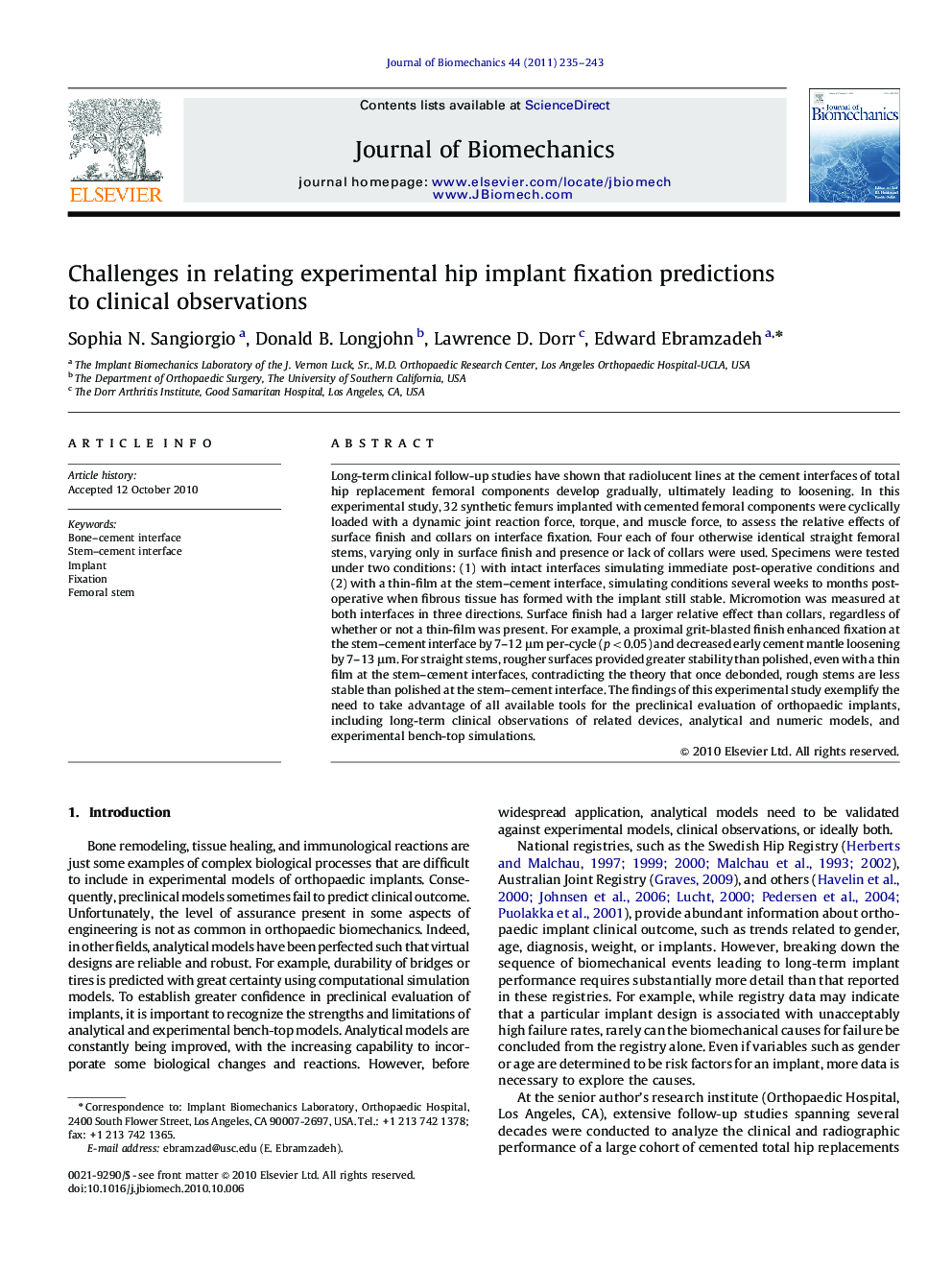| Article ID | Journal | Published Year | Pages | File Type |
|---|---|---|---|---|
| 873229 | Journal of Biomechanics | 2011 | 9 Pages |
Long-term clinical follow-up studies have shown that radiolucent lines at the cement interfaces of total hip replacement femoral components develop gradually, ultimately leading to loosening. In this experimental study, 32 synthetic femurs implanted with cemented femoral components were cyclically loaded with a dynamic joint reaction force, torque, and muscle force, to assess the relative effects of surface finish and collars on interface fixation. Four each of four otherwise identical straight femoral stems, varying only in surface finish and presence or lack of collars were used. Specimens were tested under two conditions: (1) with intact interfaces simulating immediate post-operative conditions and (2) with a thin-film at the stem–cement interface, simulating conditions several weeks to months post-operative when fibrous tissue has formed with the implant still stable. Micromotion was measured at both interfaces in three directions. Surface finish had a larger relative effect than collars, regardless of whether or not a thin-film was present. For example, a proximal grit-blasted finish enhanced fixation at the stem–cement interface by 7–12 μm per-cycle (p<0.05) and decreased early cement mantle loosening by 7–13 μm. For straight stems, rougher surfaces provided greater stability than polished, even with a thin film at the stem–cement interfaces, contradicting the theory that once debonded, rough stems are less stable than polished at the stem–cement interface. The findings of this experimental study exemplify the need to take advantage of all available tools for the preclinical evaluation of orthopaedic implants, including long-term clinical observations of related devices, analytical and numeric models, and experimental bench-top simulations.
